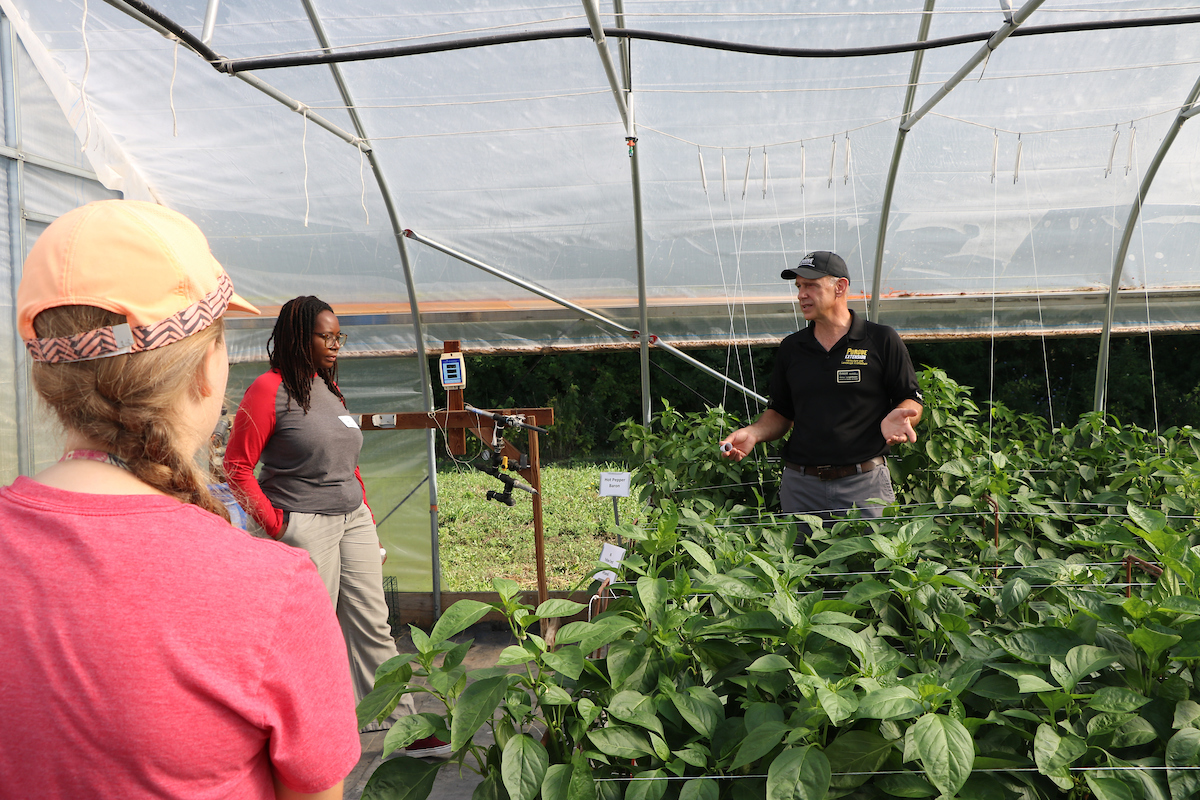Report on the Interconnection of Climate Change, Food Price Volatility, and Sustainable Development Goals
Executive Summary
Recent analysis indicates a direct and increasingly severe correlation between extreme climate events and global food price inflation. This trend poses a significant threat to the achievement of multiple Sustainable Development Goals (SDGs), particularly those concerning poverty, hunger, inequality, and climate action. Research published in *Environmental Research Letters* confirms that climate-change-exacerbated weather events are a primary driver of food price surges, impacting food security and economic stability worldwide. This report outlines the key findings, highlights the specific impacts on SDGs, and presents recommendations for mitigation and adaptation.
Climate Impact on Food Systems: A Threat to SDG 2 and SDG 13
The failure to adequately address SDG 13 (Climate Action) is directly undermining progress toward SDG 2 (Zero Hunger). The increasing frequency and intensity of extreme weather events disrupt agricultural production, leading to immediate and significant price increases for staple food items.
Evidence of Climate-Induced Food Price Spikes
A recent study systematically mapped 16 extreme weather events since 2022, demonstrating a clear causal link to subsequent food price inflation. This connection is now considered the second-most tangible impact of climate change felt by the global population, after extreme heat itself. The Consumer Price Index reflects this, with notable increases in the cost of coffee, tomatoes, and eggs coinciding with periods of record heat, hurricanes, and flooding.
Global Case Studies
- North America: Droughts in California and Arizona in 2022, a region responsible for over 40% of U.S. vegetable production, contributed to an 80% year-on-year increase in vegetable prices. Similarly, droughts in Mexico led to a 20% price increase in vegetables.
- South America: Droughts in Brazil have been linked to a 55% rise in global coffee prices.
- Asia: Unprecedented heatwaves in Japan contributed to a 48% increase in rice prices in 2024.
- Europe: Unusually wet winters in the United Kingdom resulted in a more than 22% increase in potato prices.
- Africa: Extreme temperatures in Ghana and the Ivory Coast, which produce 60% of the world’s cocoa, were linked to a 300% surge in global cocoa market prices by April 2024.
Socio-Economic Ramifications and Setbacks for SDG 1, SDG 8, and SDG 10
The consequences of climate-driven food price volatility extend beyond food security, exacerbating poverty and inequality and threatening economic stability, thereby challenging the foundations of SDG 1 (No Poverty), SDG 8 (Decent Work and Economic Growth), and SDG 10 (Reduced Inequalities).
Exacerbating Inequality
Food price inflation disproportionately harms low-income households, which allocate a larger percentage of their budget to food. This erodes their purchasing power and food security. Furthermore, it diminishes the real value of social safety nets, such as the Supplemental Nutrition Assistance Program (SNAP), as fixed monetary aid buys less food, introducing financial unpredictability for the most vulnerable families.
Threats to Economic Stability
Persistent food price increases contribute directly to headline inflation, complicating the mandates of central banks to maintain price stability. This volatility can de-anchor inflation expectations and create sustained upward pressure on inflation, posing a risk to the stable economic growth envisioned in SDG 8. The impact is felt globally, manifesting as inflation in developed nations and as a more acute food security crisis in developing parts of the world.
Recommendations for Resilience and Sustainable Adaptation
Addressing this complex challenge requires a multi-faceted approach centered on climate action, innovation, and strategic investment, aligning with SDG 9 (Industry, Innovation and Infrastructure) and SDG 17 (Partnerships for the Goals).
Prioritizing Climate Action and Adaptation Strategies
The primary recommendation is the urgent implementation of policies to reduce greenhouse gas emissions in line with global targets, directly addressing the root cause under SDG 13. Concurrently, adaptation measures are critical to building resilience within the global food system.
Key Strategies for Building a Resilient Agri-Food System
- Enhance Information Systems: Develop and deploy timely early warning systems to provide farmers with crucial information on impending climate conditions, allowing them to adapt planting strategies and mitigate exposure.
- Invest in Innovation (SDG 9): Increase public and private investment in agricultural science and technology to develop climate-resilient crop varieties (e.g., drought- and flood-tolerant strains). Funding for this research is critical and must be protected from budget cuts.
- Develop Adaptive Financial Tools: Expand the availability of financial instruments, such as crop insurance and hedging products, to help producers manage the economic risks associated with extreme weather.
- Promote Agricultural Diversification: Encourage diversification of crops and decentralization of production to avoid the severe impacts seen when a single region that dominates a global supply is affected by a climate event.
Achieving these goals necessitates robust partnerships between governments, research institutions, and the private sector, as called for in SDG 17, to ensure that the science, technology, and financial tools needed to adapt to a changing climate are developed and made accessible to producers worldwide.
Identified Sustainable Development Goals (SDGs)
The article discusses issues that are directly and indirectly connected to several Sustainable Development Goals. The analysis highlights the interconnectedness of climate, food systems, economic stability, and social equity.
-
SDG 2: Zero Hunger
This goal is central to the article, which focuses on how extreme weather events affect crop yields, leading to food price spikes and threatening food security. The text explicitly states, “The unprecedented nature of many of the climate conditions behind recent food price spikes highlights the ongoing threats to food security.”
-
SDG 13: Climate Action
The entire article is framed around the impacts of climate change. It directly links the “increased intensity and frequency” of extreme weather events like heatwaves, droughts, hurricanes, and floods to climate change, which in turn drives the food price crisis. The article quotes researchers who emphasize “the urgency to enact policies that reduce greenhouse gas emissions and limit global warming.”
-
SDG 1: No Poverty
The article emphasizes the disproportionate impact of rising food prices on vulnerable populations. It states that the consequences “can be devastating, especially for lower-income consumers” and that “the world’s poor bearing most of the economic pain and health impacts.” This directly relates to the goal of ending poverty and building the resilience of the poor.
-
SDG 10: Reduced Inequalities
The article highlights how the crisis exacerbates existing inequalities. It points out that low-income households spend a much higher portion of their budget on food, so price spikes affect them more severely. An expert is quoted saying, “I worry more about the distributional consequences than I worry about the geographic consequences,” directly addressing the theme of inequality.
-
SDG 8: Decent Work and Economic Growth
The connection to this SDG is made through the discussion of inflation and economic stability. The article notes that “food price increases are leading to increased headline inflation” and that “Central bank mandates for price stability may become increasingly challenging to deliver,” which threatens stable economic growth.
Specific SDG Targets Identified
Based on the article’s content, several specific targets under the identified SDGs can be pinpointed.
-
Target 2.4: Ensure sustainable food production systems and implement resilient agricultural practices
The article discusses how current agricultural production is disrupted by climate events (“droughts across California and Arizona contributed to a 80% year-on-year increase in U.S. vegetable prices”). It also mentions the need for adaptation, such as developing “drought resistant varieties, solvent varieties of crops,” which aligns with building resilient agricultural practices.
-
Target 2.c: Adopt measures to ensure the proper functioning of food commodity markets and their derivatives and facilitate timely access to market information, including on food reserves, in order to help limit extreme food price volatility
The article is centered on food price volatility, citing massive price increases for cocoa (300%), vegetables (80%), and coffee (55%). It also highlights the importance of “timely information on climate conditions” to help farmers adapt, which supports the goal of facilitating access to market information to manage volatility.
-
Target 13.1: Strengthen resilience and adaptive capacity to climate-related hazards and natural disasters in all countries
The article details the impact of numerous climate-related hazards, including “record heat, hurricanes, and dangerous flooding.” It discusses the need for adaptation, such as using early warning systems and insurance products, which are measures to strengthen resilience and adaptive capacity.
-
Target 1.5: By 2030, build the resilience of the poor and those in vulnerable situations and reduce their exposure and vulnerability to climate-related extreme events and other economic, social and environmental shocks and disasters
The article explicitly states that “low-income people… spend a more significant portion of their income on food” and that price shocks add “unpredictability in the finances of a poor family.” This directly addresses the vulnerability of the poor to economic and climate-related shocks.
Indicators for Measuring Progress
The article mentions or implies several indicators that can be used to measure the issues discussed and track progress towards the identified targets.
-
Indicator for Food Price Volatility:
The article directly references the Consumer Price Index (CPI) as a measure of inflation. It also provides specific quantitative data on price spikes for various commodities, which serve as direct indicators of price volatility. Examples include:
- “80% year-on-year increase in U.S. vegetable prices”
- “20% price increase in vegetables [from Mexico]”
- “coffee prices 55% globally”
- “48% raise in rice prices”
- “22% increase in potato prices”
- “increase in global market prices of cocoa of around 300%”
-
Indicator for Climate-Related Hazards:
The article implies the use of the frequency and intensity of extreme weather events as an indicator. It refers to “record heat,” “major hurricanes,” “dangerous flooding,” “droughts,” and “unprecedented temperatures” as the drivers of the problem.
-
Indicator for Agricultural Resilience:
The impact on crop yields is a key implied indicator. The article links weather events directly to agricultural output, noting that California “accounts for over 40% of the country’s vegetable production” and that droughts there impacted prices, and that “wet winters” in the UK affected potato prices.
-
Indicator for Economic Vulnerability:
The proportion of income spent on food by different income groups is mentioned as a key indicator of inequality and vulnerability. The article states, “The average U.S. household spends about 10% of its budget on food. It is much higher for low income households.”
Summary of Findings
| SDGs | Targets | Indicators |
|---|---|---|
| SDG 2: Zero Hunger |
|
|
| SDG 13: Climate Action |
|
|
| SDG 1: No Poverty |
|
|
| SDG 10: Reduced Inequalities |
|
|
| SDG 8: Decent Work and Economic Growth |
|
|
Source: time.com







